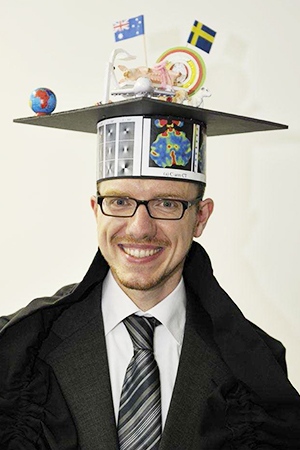Andreas Fieselmann
Interventional Perfusion Imaging Using C-arm Computed Tomography: Algorithms and Clinical Evaluation
Abstract
A stroke is a medical emergency which requires immediate diagnosis and treatment. For several years, image-based stroke diagnosis has been assisted using perfusion computed tomography (CT) and perfusion magnetic resonance imaging (MRI). A contrast agent bolus is injected and time-resolved imaging, at typically one frame per second, is used to measure the contrast agent flow. However, these two modalities are not accessible in the interventional suite where catheter-guided stroke treatment actually takes place. Thus, interventional perfusion imaging, which could lead to optimized stroke management, is currently not available.
In this thesis, a novel approach is developed that makes interventional perfusion imaging possible. It uses a C-arm angiography system capable of CT-like imaging (C-arm CT). This system can acquire projection images during a rotation around the object which are then used to reconstruct 3-D data sets. The comparably low C-arm rotation speed (typically 3–5 seconds per 200°) is the main technical challenge of this approach.
One of the major contributions of this thesis lies in the development and evaluation of a novel combined scanning and reconstruction method. It uses several interleaved scanning sequences to increase the temporal sampling of the dynamic perfusion signals. A dedicated reconstruction scheme is applied to process the data from this protocol. For the first time, in vivo C-arm CT perfusion studies have been carried out and the results have been compared to those from a reference perfusion CT exam. Promising correlation values ranging from 0.63 to 0.94 were obtained.
An additional contribution was made in the field of image reconstruction theory by deriving a theoretical model for image reconstruction artifacts due to time-varying attenuation values. The attenuation values in C-arm CT perfusion imaging vary due to the contrast agent flow during the long C-arm rotation time. It was shown that the magnitude of these artifacts can be reduced when using optimized reconstruction parameters.
Furthermore, investigations regarding special injection protocols were carried out and fundamental image quality measurements were made.
Through the methods developed, the measurements conducted and results obtained, this thesis made a number of significant and original contributions, both on a practical and on a theoretical level, to the novel and highly relevant research field of interventional C-arm CT perfusion imaging.
